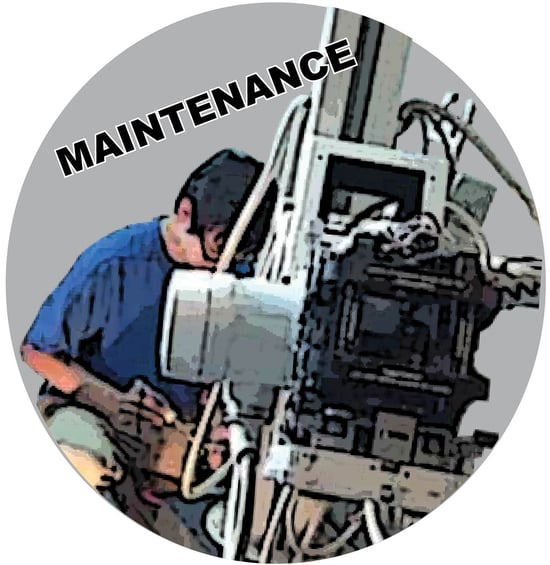X-ray equipment isn’t cheap. And if you’re like most medical imaging departments, when one goes down, it’s a pain. You have to  reschedule patients, find an available technician and hope that it can be repaired quickly. That’s why it’s so important to have routine maintenance performed on your X-ray equipment (and all medical imaging devices) on schedule. It’s the best protection against mechanical failures.
reschedule patients, find an available technician and hope that it can be repaired quickly. That’s why it’s so important to have routine maintenance performed on your X-ray equipment (and all medical imaging devices) on schedule. It’s the best protection against mechanical failures.
So, what happens during routine maintenance on X-ray equipment? There are three different preventative maintenance areas: functional verification, interior cleaning and testing. Let’s take a closer look at all three.
Step 1: Functional Verification
The first step of preventative maintenance for your X-ray equipment is to verify what’s working and what’s not. Your technician will look at movement, X-ray production and image acquisition in order to get a baseline for your system’s current performance. The technician will do an image quality check with a phantom or known reference object. After going through all the performance steps, the technician will perform a second quality check to make sure that the image is as good as the first test or better. In addition, tube and detector alignment will be tested, adjusted and optimized as needed.
Step 2: Interior Cleaning
Your X-ray systems needs regular cleaning in order for it to achieve optimal performance. The technician will clean the inside of the system, removing debris and dust that can interfere with cooling, affect movement and show up in patient images. Your X-ray tube will also be wiped clean. In addition, O-rings will be replaced. Your high voltage cables will also be inspected, cleaned and re-greased. Lint and dust will be “blown out” of all electronic components. In addition, the rails and gears that help move the tube, collimator and table top will also be thoroughly cleaned and lubricated.
Step 3: Electrical and Mechanical Testing
Testing all mechanical and electrical components during preventative maintenance is key. Your technician will test the safety interlock, warning lamp and sensors. He or she will also inspect and verify secure mounting hardware and wire terminations. If your system has motion manipulation, your technician will verify the motion control operation. Each axis will be taken to its home position and crash limits will be set accordingly. The technician will also adjust limit sensors, motors and encoders. Workstation functions will also be tested. If needed, DR applications may be updated, software patches may be installed and files could be backed up.
As your technician moves through each stage of routine preventative maintenance, they will also look for potential issues and deteriorating parts that could possible fail before the next scheduled maintenance visit. Your report might suggest that parts be replaced, or that you keeps certain parts on hand just in case.
Talk To An Expert
If you have any questions about routine preventative maintenance for radiology equipment, talk to an expert at Atlantis Worldwide. For more than 28 years, we’ve been helping hospitals, clinics, urgent cares and medical imaging operations find refurbished and used medical imaging equipment that can deliver both performance and cost savings.
For more information, contact Atlantis Worldwide today!
Some blogs you may have missed:
- 4 Tips on X-Ray Tubes
- CR to DR: Digital Radiographic Upgrades And Options
- The 101 On Veterinary X-Ray Equipment
- MRI Infographic: Closed Bore, Open MRI & Wide Bore
- Six Key Considerations for Radiology Equipment Selection
About the author: Vikki Harmonay



